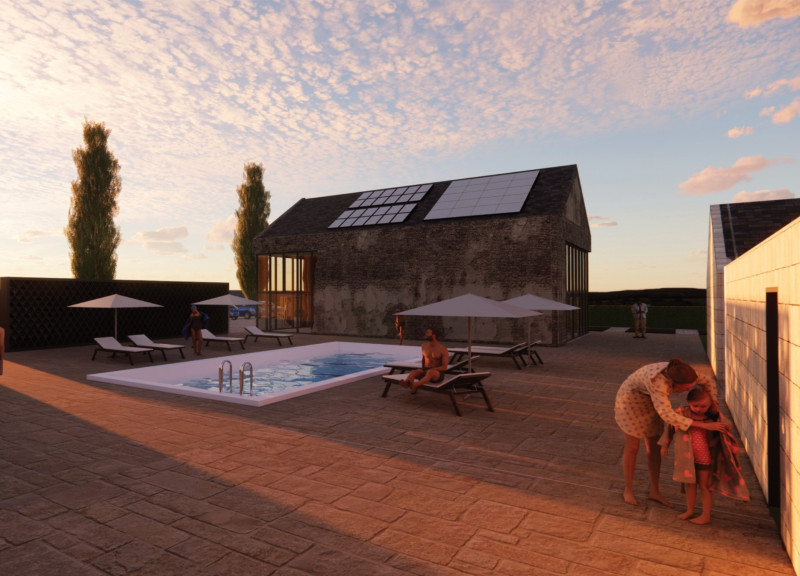5 key facts about this project
The SIP & STAY project is located in a vineyard setting, designed to provide guests with a comfortable and engaging experience in nature. It features various types of guest houses that cater to different needs, promoting both privacy and social interaction. The overall design focuses on sustainability, flexibility in accommodation, and a strong connection to the surrounding landscape.
Guest House Configuration
The layout includes two semi-private houses that are connected by a common terrace. This arrangement allows two familiar couples to spend time together while still having their own space. For couples seeking peace and quiet, there is a completely private house. Additionally, there is a larger family house that can accommodate groups, featuring separate bedrooms and a shared living area. This thoughtful approach balances communal and personal experiences.
Integration with Nature
The design places importance on outdoor spaces, encouraging guests to connect with the natural surroundings. Multiple leisure areas blend the built environment with the landscape. The visual link to the vineyards is preserved, inviting guests to explore the agricultural environment. A prominent existing building serves as the central hub for communal wine-tasting activities. Positioned strategically, the swimming pool serves to connect the main building with the guest houses, enhancing the shared outdoor experience.
Sustainability Strategies
Sustainability is a key feature of the design, with systems in place to improve efficiency and minimize environmental impact. The project uses a heat pump along with solar collectors for heating and hot water, promoting self-sufficiency. Photovoltaic systems installed on the roofs generate solar energy to meet the electricity needs of the complex. A rainwater harvesting system captures and stores rainwater for irrigation and sanitation, emphasizing an environmentally friendly approach.
Innovative Design Features
Notable in the design is the incorporation of terracotta pipes that function as a natural cooling system through evaporation. This element not only provides temperature control but also acts as a visual barrier at the entrance. This approach combines practicality and aesthetics, reflecting a dedication to creating a living environment that respects both modern needs and traditional influences.






















































